Last Updated on October 31, 2024 by Ellen
Campeche is a Mexican city where planners did almost everything right in the old section of town, which now serves as a major tourism draw. We liked virtually everything we saw.
It is a charming colonial city worth your time. This post explains why.
Charming colonial Campeche
Campeche was walled off to keep pirates out in colonial times, and everything inside those walls had facelifts and repairs beginning in the 1990s. The work lasted well into the 2000s. A local man told us refurbishment plans began back in the 1980s. I don’t know who exactly was responsible for this wonderful vision, but the planners from the 1980s seem to have been true civic leaders.
Calle 59 is a street closed to cars and restaurants that has tables and chairs outside in the road. It’s popular with tourists and locals.
I don’t drink alcohol, so I brought a chocolate frappe to the table from a great shop on Calle 59 – info on that here from Instagram. And, there are plenty of great places to eat off that street as well, including this one I wrote a quick review for on Instagram.
The old wall no longer goes all the way around the city – parts are missing. However, tourists can walk on the portions still there for quite a long way around the old section if you pay admission to the museums, which actually have interesting displays.
We paid less than $1 USD for admission into the museums on the bottom of the wall. That fee gives you access to the walk on top of the wall.
If you do nothing else in Campeche — do this. The views are stunning.
You can see where nature has reclaimed some of the city. But the facades hide those areas, and you don’t notice it from street level. It gives it the feel of how it must have been in the 17th century, when the wall was first built to keep out invaders.
For photographs, the sun’s shade starts to impede facades by around 3:00 p.m., so start your shots well before then, with around the noon hour being ideal for no shadows.
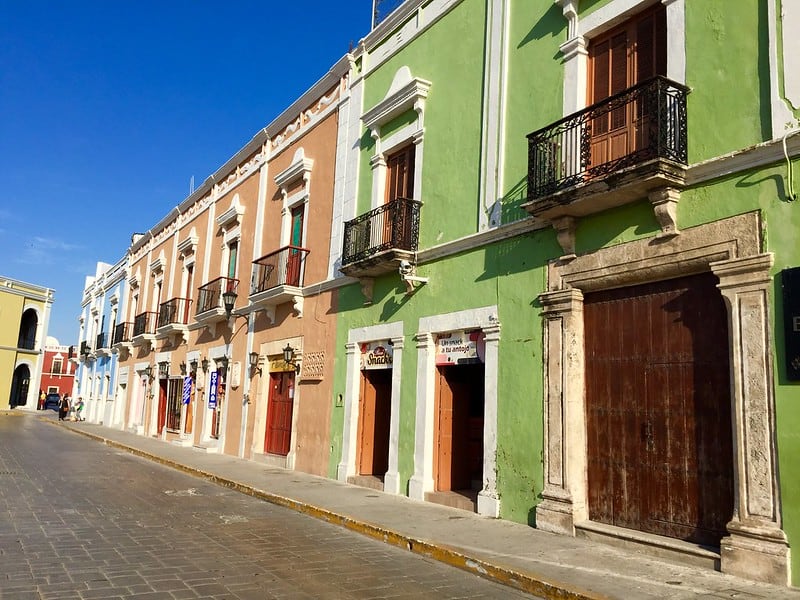
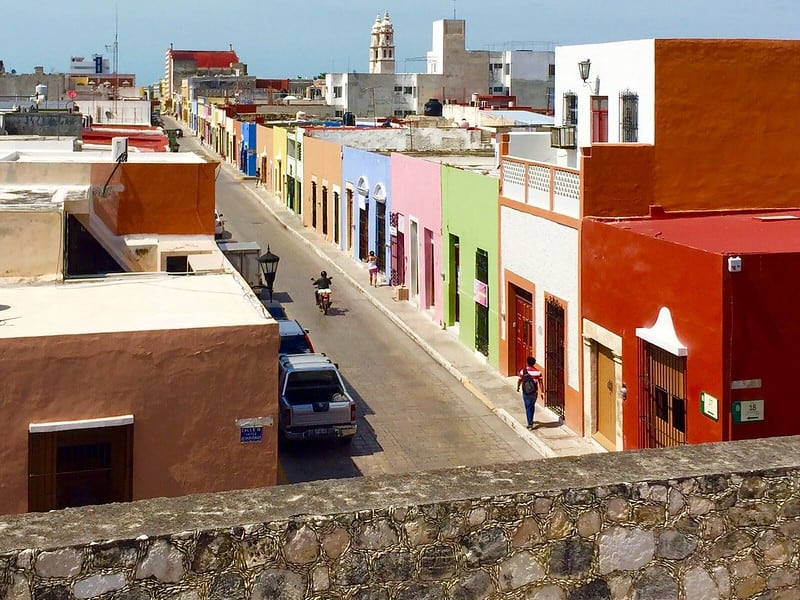
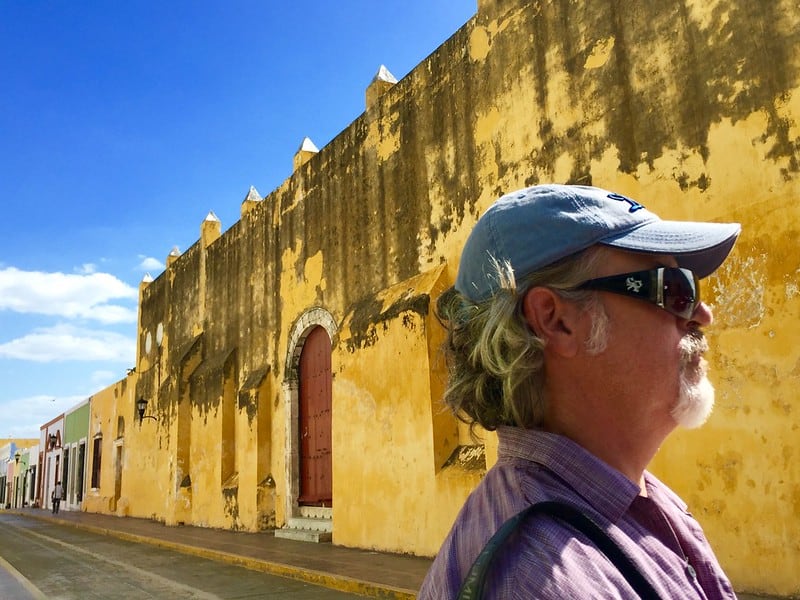
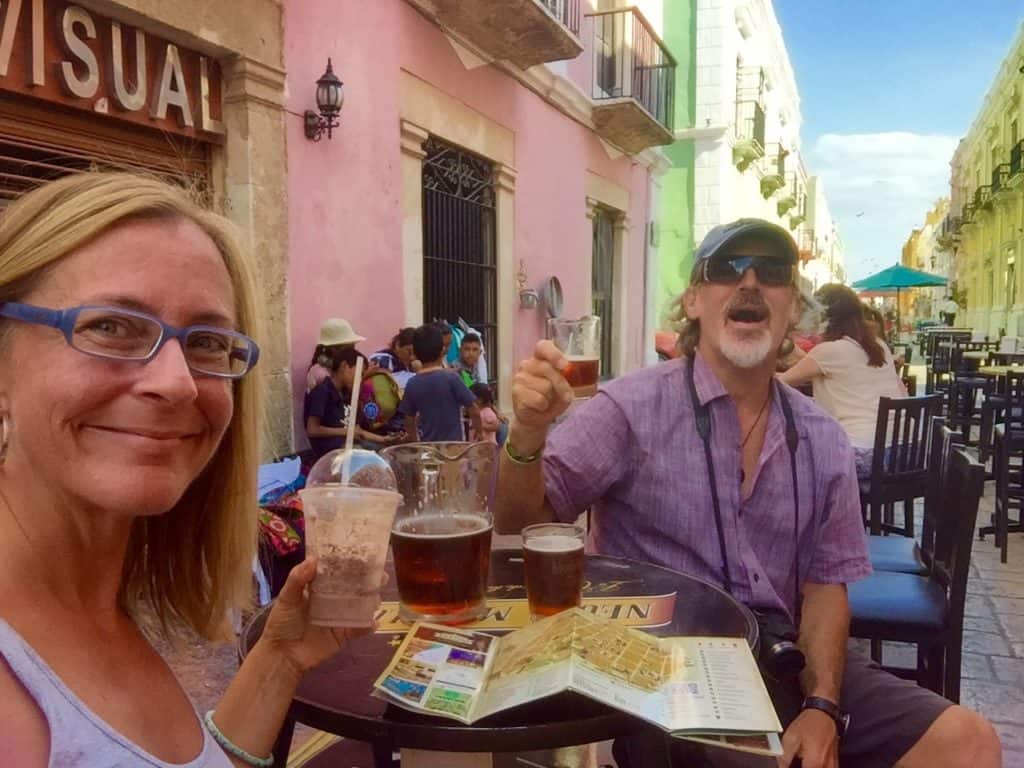
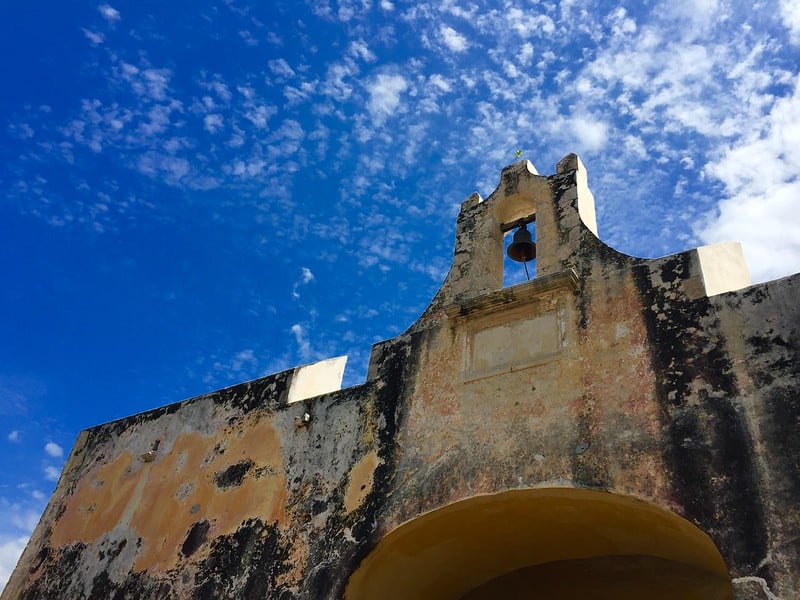
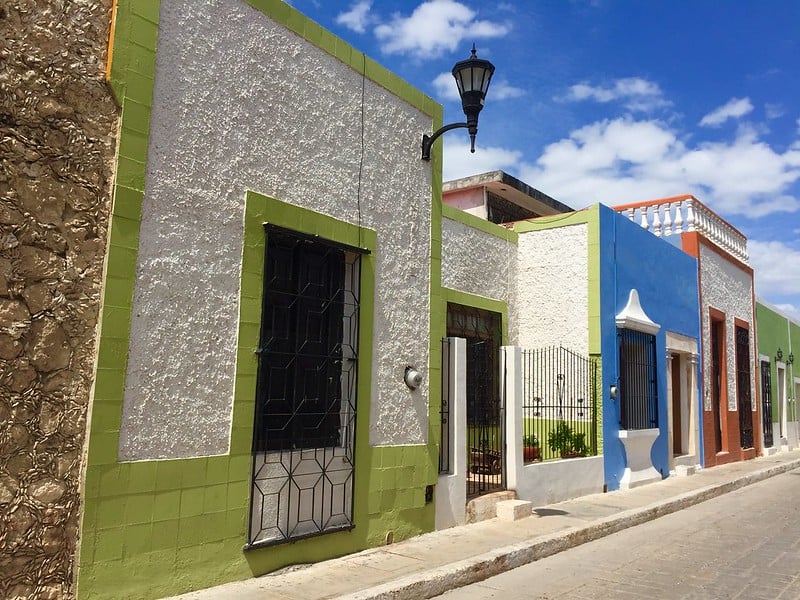
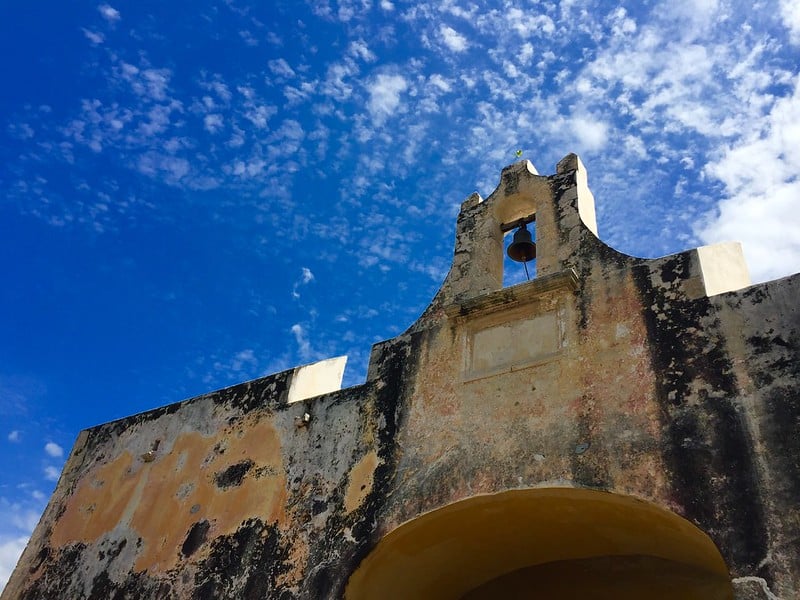
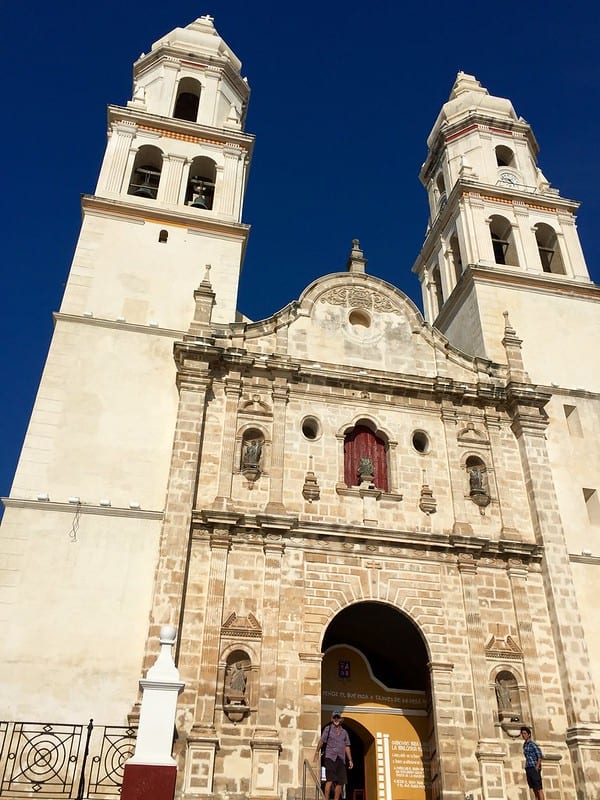
We also took a trolley tour around the old city for less than $6 USD each. This tour was only in Spanish.
That said, we enjoyed the tour, even though we understood only a little.
The ride goes around the old city, and then out onto the malecon (waterfront boardwalk) for a little stretch. There are Catholic influences throughout Campeche, including on the malecon.More great city planning here. The malecon has separate running and bike paths, and there is even a spot with free exercise equipment. The views may be best in the afternoons, because the sun hits the city from the west, over the Gulf of Mexico.
Some nights feature live music in the square in the old city, and every night has a light show that is highly entertaining about human history and humanity in this region of the world.
While all of this is designed for tourists, there weren’t too many foreign tourists there. Campeche is one of the least populated states in this country. It’s not as easy to get there as some other areas of the Yucatan region because it’s a long drive from the Cancun airport – about seven hours by car, longer by bus. (Note, there is an airport in Campeche, and Mexican budget airlines do offer flights there.)
We took a bus to Campeche from Chetumal, near the Belize border. That route took us about 6.5 hours. The ride is mostly through rural areas – but the road was in great shape and if you didn’t know any better, you’d think you were back in the U.S.
People have asked me if I worry about being away from the more heavily-traveled tourist areas, like Cancun and Playa del Carmen and Tulum. The answer is no, not at all. I never once feared for our safety.
Generally speaking, Mexicans are good, hard-working people who live moral lives. The majority of Mexicans who are religious are Catholic. In Campeche, the main church is gorgeous, with two towers and an ornate altar area.
Right next to the church it is an interesting museum. There are old headstones cemented into the walls, and I even found my last name! Turns out there was a McGregor sent here by the U.S. government as a consulate in the early 1800s, according to a quick Google search.
To anyone who needs more reassurance about the safety of this charming city: police make regular patrols on segways within the walled city, and we’ve seen many police cars outside the wall.
Outside the walled-section of Campeche
Almost everything you need during a stay in Campeche is on a stretch of road called Centro Calle, from large grocery stores, a Mexican WalMart, the ADO bus station, several shops and even some doctor offices and clinics.
The local bus runs up and down Centro Calle every few minutes. It costs the equivalent of less than $.50 cents. The buses also go in other parts of the city, so you don’t need a car.
People were kind and helpful, and happy to see us tourists visit. Many Mexicans in Campeche knew English, but not as many as in Cancun or Playa del Carmen or other areas of Mexico. With some effort and patience, you will be able to communicate with the most palabras basico en espanol.
We stayed just outside the walled city down Calle Centro a couple of kilometers. Prices were cheaper. My husband found this place on AirBnB for $17 a night. It was clean, had a soft bed, fans and A/C, fridge, TV, coffee maker and a hot shower. So you can visit this city for little money if you don’t eat out every meal, every day.
Despite being on the Gulf of Mexico, Campeche has no beach. With temperatures nearing 100 degrees, we decided to take a day trip by bus a couple of hours south in search of white sand. We found it in Sabancuy – and if you need a beach, Sabancuy (sa-ben-COY) a good spot for a side trip.
To close this post on Campeche – it’s totally worth your time and money. This colonial city is a romantic and bright, and it’s a happy place with great vibes.
This post was updated in late November 2019 for prices and airport information.
Pin this!



